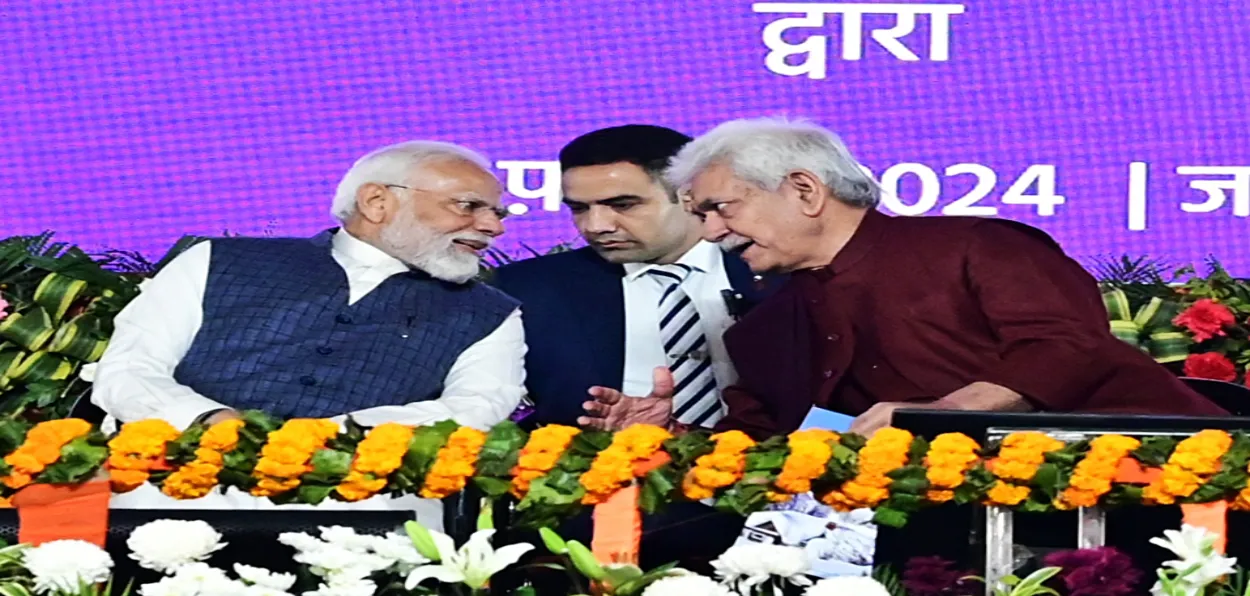
Ahmed Ali Fayyaz/jJammu
Prime Minister Narendra Modi’s March 7 visit will be his first one to Kashmir after the abrogation of Article 370 and in his second term in office. It’s happening in a situation where common people are enjoying normal life and terror-related violence, hartals and stone-pelting is a chapter of bygone era in the Valley.
He is scheduled to address an official function at Srinagar’s Sher-e-Kashmir International Convention Centre (SKICC).
Prime Minister Modi who implemented most of the promises made in the BJP’s agenda in his second term has been a frequent visitor to J&K. He visited the erstwhile State 15 times in his first term; and four times in the second term. So far all his visits in the current term were to Jammu.
Of his four visits to Jammu, two were exclusively for the Army. In April 2022, Modi addressed a Panchayat Diwas function and launched projects worth Rs 20,000 crore at village Palli in Samba. Last month, he addressed a public meeting in Jammu and launched projects worth Rs 32,000 crore.
It’s said that Modi’s fewer visits to J&K in his second term were because of a deliberate policy to avoid provocing Pakistan, separatists, and militants on the abrogation of Article 370 and the following restrictions on mass movement and the internet for a couple of months thereafter in 2019.
A host of tough interventions by the Centre on the terrorism front upended a period that for 20 years benefitted only the country’s adversary. From 1999 to 2019, India remained at the receiving end of a well-coordinated campaign in which secessionism and all acts of abusing the country were incentivized by the system.
It took the Governments in Srinagar and New Delhi more than three years to dismantle most of the visage of the ‘golden period of separatism’, all without firing a single bullet and the process is on.
The period after August 5, 2019 – the day Article 370 was abrogated by Parliament – was the most delicate phase in which the security forces had estimated about 500 deaths could occur and yet nothing happened.
Modi’s Kashmir visit seems to convey to his admirers and critics alike that his mission of the abrogation of Article 370 had been meticulously accomplished. While the armed insurgency has been reduced to a trickle, it’s also curtains for shutdowns, stone pelting, mob attacks and clashes with security forces, pro-Pakistan and anti-India demonstrations, gun salutes to the slain militants, and civilian killings.
Modi’s government’s significant achievement is the change of narrative in Kashmir. Even as the culture of competitive separatism has not been fully replaced by competitive nationalism, most of the leaders, who were soft toward separatists, are no longer playing to the galleries.
Through his weekly broadcasts and video conferences, Modi has been speaking to the valley’s common people and lauding his stories of success and persevearance. Even at his Jammu rally on 20 February, he interacted through video conference with men and women whose life changed after they availed of the government schemes.
However, PM Modi could not inaugurate his dream project of connecting Kashmir to the rest of the country through a railway line before the 2024 Lok Sabha Elections due to ongoing work at the Sawlakot Yard and track laying at Tunnel No one in Reasi.
ALSO READ: Why are there no hybrid Imams in India?
The new deadline for its inauguration is September 2024 and the BJP is hopeful that it will be again PM Modi who will get to inaugurate the lifeline to Kashmir.
